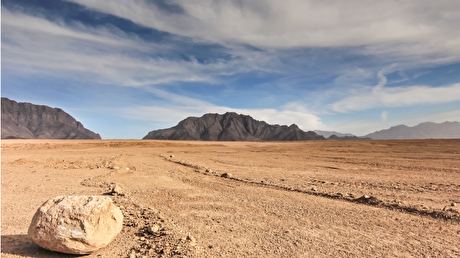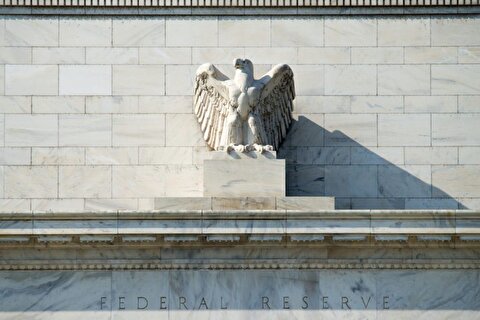
Rating of Iranian Banks to Be Made Public

After the illegal financial and credit institutions hurt a lot of depositors, the government put a new plan on its agenda to rate certified banks,” Minister of Economic Affairs and Finance Masoud Karbasian told the Persian newspaper Iran in a recent interview.
According to Karbasian, the banks will be rated in terms of their performance, volume of capital and other indicators and standards, while the ratings will be disclosed publicly “so that people can select their bank with complete knowledge”.
“The plan will be implemented in the next fiscal year that begins on March 21,” he added.
Iran has been planning to rate its banks for a number of years now.
Ali Divandari, the head of Monetary and Banking Research Institute, had said representatives from international rating agencies visited Tehran during the FINEX 2016 event to begin negotiations regarding the rating of Iranian banks and companies.
No further news was published on that front, but officials with the Central Bank of Iran in 2016 announced that a new rating system has been devised locally.
Farshad Heydari, CBI’s deputy for supervisory affairs, said in September 2016 that the results of the ratings will not be made public as “there is no need” for it.
He had also said at the time that banks will be classified under four categories based on their level of risk and the results of the single scheme that will treat all private and public-sector banks equally will influence interbank interactions and the banks’ operations with CBI.
Karbasian’s latest remarks indicate the powerful impact of illegal credit institutions.
These institutions mushroomed during the tenure of the previous administration, held a quarter of the country’s liquidity at one point and left many distraught depositors in their wake.
The economy minister mainly sought to use the bank rating system to reassure the public that “there is now room for concern” and “you will be able to easily trust the big and credible banks of the country and deposit your money with them”.
Iran’s banks are currently experiencing a hefty and crippling credit crunch and simply cannot afford to lose any more money, and Karbasian’s stance shows the government aims to win back the trust of the general public through transparent ratings.
The official also directed the people to only engage with financial institutions endorsed by the central bank.
He also firmly denied all recent reports claiming some of Iran’s biggest banks are bankrupt and referred to them as “completely false” accounts published for creating an atmosphere of “despair and frustration”.
The minister pointed to reports that CBI does not back the country’s major banks because they are bankrupt and people must fend for themselves and their money as another lie, stressing that the government is committed to safeguarding the people’s deposits.
Extending further reassurances that banks will be in safer waters in terms of capital in the immediate future, Karbasian said a new debt swap scheme involving the people, businesses, banks, CBI and the government has been incorporated in the annual budget, which will help clear a significant portion of debt.


Gold price edges up as market awaits Fed minutes, Powell speech

Glencore trader who led ill-fated battery recycling push to exit

Emirates Global Aluminium unit to exit Guinea after mine seized

UBS lifts 2026 gold forecasts on US macro risks

Iron ore price dips on China blast furnace cuts, US trade restrictions

Roshel, Swebor partner to produce ballistic-grade steel in Canada

US hikes steel, aluminum tariffs on imported wind turbines, cranes, railcars

EverMetal launches US-based critical metals recycling platform

Afghanistan says China seeks its participation in Belt and Road Initiative

First Quantum drops plan to sell stakes in Zambia copper mines

Ivanhoe advances Kamoa dewatering plan, plans forecasts

Texas factory gives Chinese copper firm an edge in tariff war

Pan American locks in $2.1B takeover of MAG Silver

Iron ore prices hit one-week high after fatal incident halts Rio Tinto’s Simandou project

US adds copper, potash, silicon in critical minerals list shake-up

Barrick’s Reko Diq in line for $410M ADB backing

Gold price gains 1% as Powell gives dovish signal

Electra converts debt, launches $30M raise to jumpstart stalled cobalt refinery

Gold boom drives rising costs for Aussie producers

First Quantum drops plan to sell stakes in Zambia copper mines

Ivanhoe advances Kamoa dewatering plan, plans forecasts

Texas factory gives Chinese copper firm an edge in tariff war

Pan American locks in $2.1B takeover of MAG Silver

Iron ore prices hit one-week high after fatal incident halts Rio Tinto’s Simandou project

US adds copper, potash, silicon in critical minerals list shake-up

Barrick’s Reko Diq in line for $410M ADB backing

Gold price gains 1% as Powell gives dovish signal

Electra converts debt, launches $30M raise to jumpstart stalled cobalt refinery

















